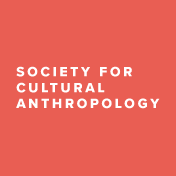
More than most scholarly associations, the Society for Cultural Anthropology has come to understand itself as what Christopher Kelty (2005) calls a recursive public: one that is constituted by a concern for the technical conditions of possibility for its very existence. The disruption caused by the American Anthropological Association’s move to a new publishing partner in 2008, along with a desire to explore new digital forms of scholarship, precipitated an “infrastructural moment” (Fortun and Fortun 2015) that continues today as the Society prepares to relaunch its widely admired website in February 2019.
Over the past decade, the work of designing digital infrastructure (see Kenner 2014) has proceeded apace with the work of theorizing it, generating a rich archive of reflections on the changing landscape of scholarly communication from the vantage point of one section of a larger learned society. This Collaboration Studio gathers some of those reflections in one place. But, in the months ahead, it will also serve as a public workspace for a virtual seminar on “Publishing Infrastructure,” convened by managing editor Marcel LaFlamme, in which a group of graduate students in the Contributing Editors Program will both participate in the hands-on work of standing up our new website and reflect on its implications for how we think about knowledge production and associational life in the academy today.
It is worth recalling that the Collaboration Studio section of the Society’s website was created at the initiative of graduate students, who envisioned “an experimental laboratory in which to stage connections, mentorships, and collaborations across the digital platform we have built.” This session seeks to put a new spin on the format, placing previously published content in dialogue with original posts by seminar participants. Our hope is that this approach will help site visitors to understand the labors that underpin a move from one platform to another, while piloting a seminar series that will encourage Contributing Editors to work across the silos of their sections and to come together for a fixed period of time around projects of mutual interest.
References
Fortun, Kim, and Mike Fortun. 2015. “An Infrastructural Moment in the Human Sciences.” Cultural Anthropology 30, no. 3: 359–67.
Kelty, Christopher. 2005. “Geeks, Social Imaginaries, and Recursive Publics.” Cultural Anthropology 20, no. 2: 185–214.
Kenner, Ali. 2014. “Designing Digital Infrastructure: Four Considerations for Scholarly Publishing Projects.” Cultural Anthropology 29, no. 2: 264–87.
Posts in This Series

Publishing Anthropology, Part 2: Process and Infrastructure
This episode of AnthroPod is the second of a two-part series on publishing in academia. We go behind-the-scenes of academic publishing, looking to the past and ... More

Guiding Lines
The author guidelines for Postmodern Culture, by its own account one of the first scholarly journals to be published on the Internet, includes the following not... More

On Doing the Right Thing: The Rights of Readers
I am super-excited and impressed by the American Anthropological Association’s (AAA) decision to make Cultural Anthropology open access—it's a bold move and one... More

Open Access, Open Minds
There’s a couplet in the Tirukkural, the sixth-century Tamil ethical treatise from south India, which speaks beautifully to the philosophy of giving. Kaimaaru v... More

A Space of Play: The Past and Future of the Contributing Editors Program
What follows is the transcript of a conversation that took place at the 2016 spring meeting of the Society for Cultural Anthropology (SCA) between Cultural Anth... More

How Cultural Anthropology Operates
In light of the ongoing discussion about editorial practices at HAU, we as the incoming editors of Cultural Anthropology (CA) wanted to take this opportunity to... More